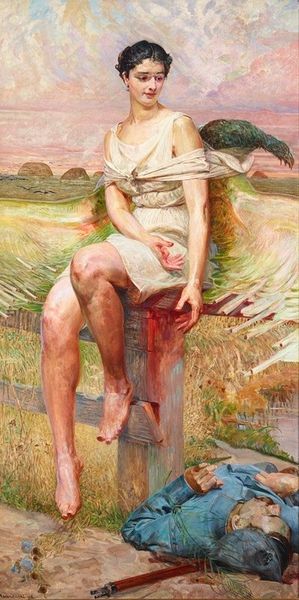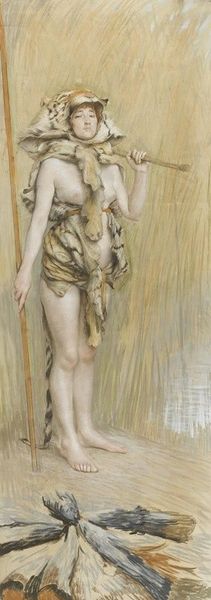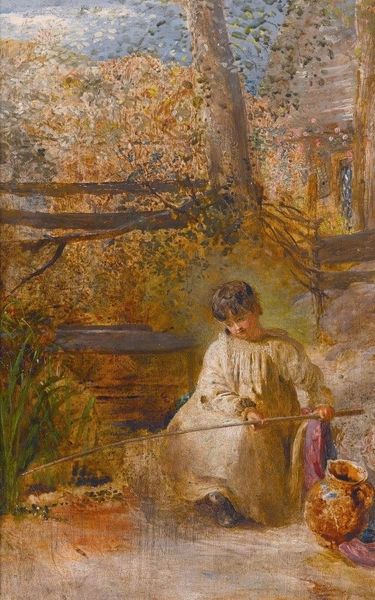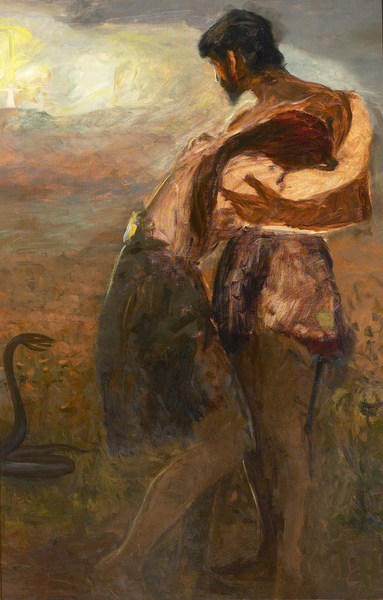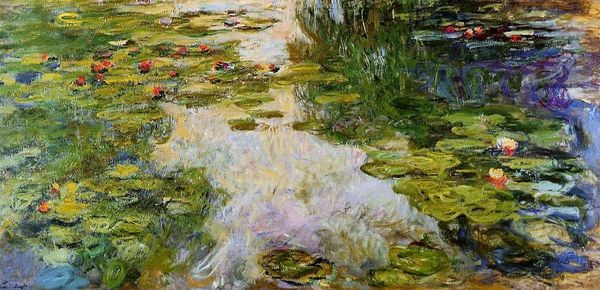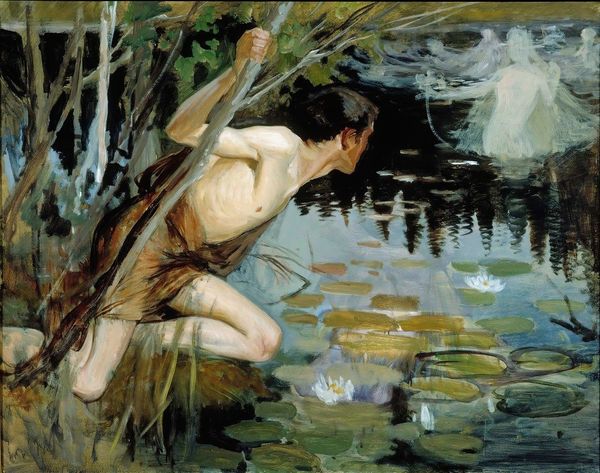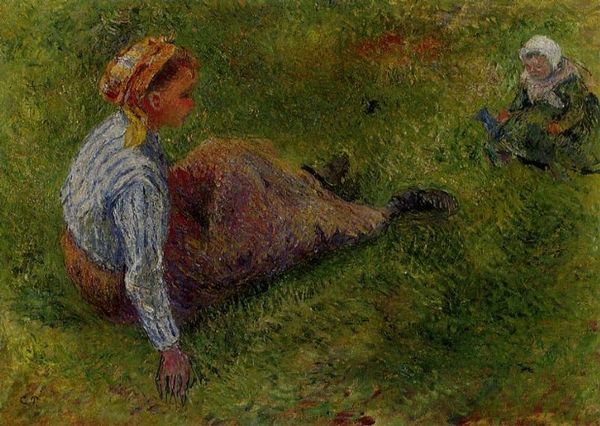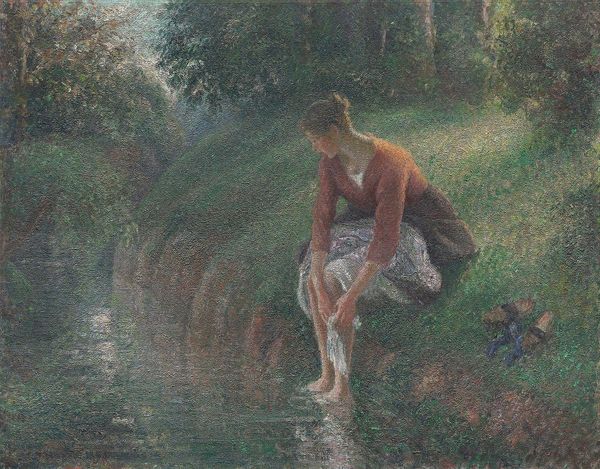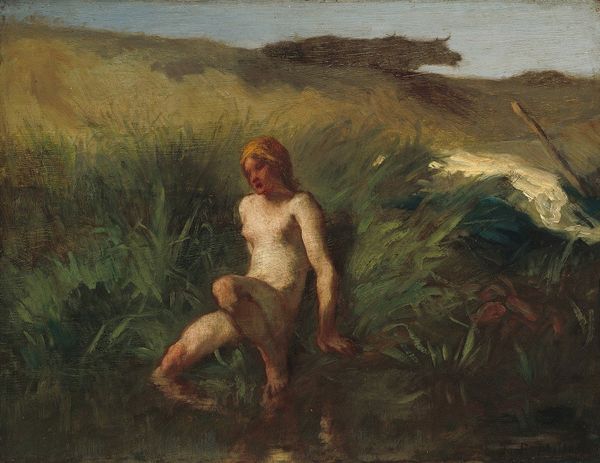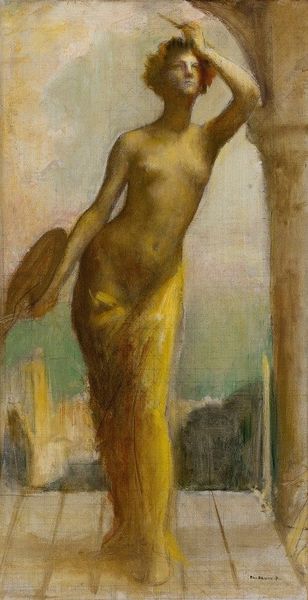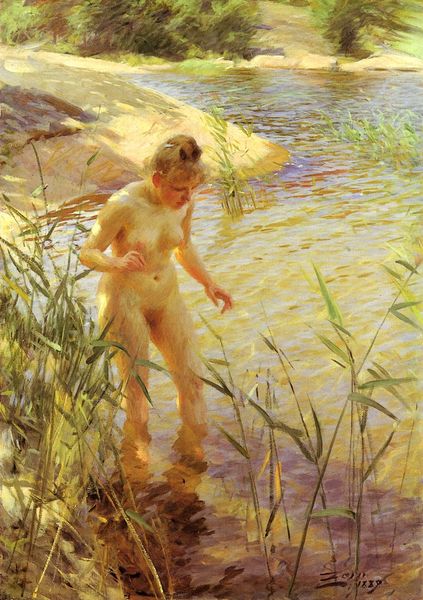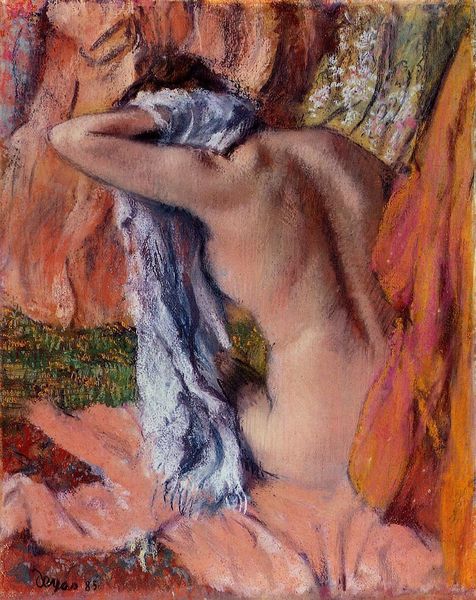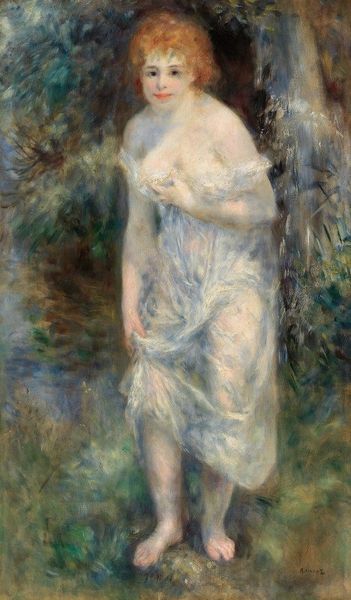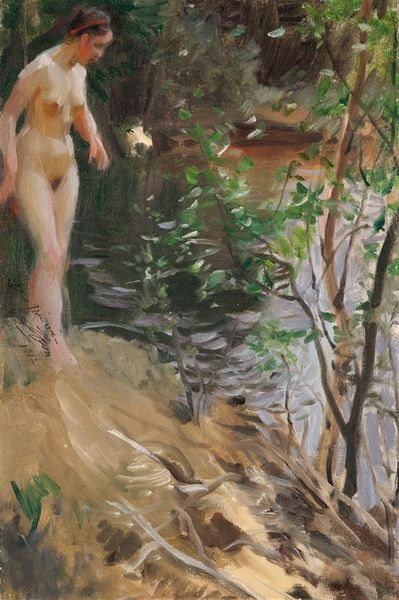
Copyright: Public Domain: Artvee
Curator: Looking at this artwork, my initial reaction is one of peculiar serenity mixed with a touch of the grotesque. The almost ethereal figure seems both bound to and emerging from the landscape. Editor: Indeed. Here we have "Spring," an 1898 oil painting by Jacek Malczewski. It's fascinating to see Malczewski intertwine elements of symbolism and mythology within a landscape. It's indicative of the socio-political turbulence of partitioned Poland at the time. Curator: From a purely visual standpoint, I find the artist's handling of the figure captivating. The muted palette, almost monochromatic in places, accentuates the tactile quality of the oil paint. Note how the branches seem to simultaneously obscure and reveal the figure's form, creating a visual tension. The diagonal composition is very strong. Editor: Absolutely. And it's critical to acknowledge that Malczewski created this within a Polish artistic landscape dominated by debates about national identity. Spring, in this light, serves as an allegory for national rebirth, the nude figure signifying the vulnerability yet potential inherent in the Polish spirit yearning for liberation. Curator: I appreciate that contextual reading. However, one cannot ignore the figure’s unsettling ambiguity. The partial nudity, the organic matter clinging to the body—do these elements represent decay, regeneration, or something altogether more complex? How does the formal structure suggest themes beyond politics? Editor: Precisely. That tension mirrors the sociopolitical atmosphere of fin-de-siècle Poland. Intellectuals of the era grappled with conflicting desires to assert Polish cultural distinction against foreign influence and with adapting artistic currents of the wider world. Curator: Considering that, one could read the work as representing the artist's struggle with articulating Polish identity with classical styles while exploring universal ideas about the relationship of humanity with nature. I wonder how this was perceived in Polish society at the time, given the somewhat provocative imagery? Editor: This particular painting sparked much debate among critics, actually. While some praised Malczewski for his audacious use of symbolic imagery, others criticized what they perceived as its stylistic peculiarities. This controversy underscores art’s vital public role in challenging cultural norms. Curator: An excellent example of the productive tension between purely formal readings and contextual perspectives, which in turn encourages us to view a work of art with refreshed eyes and an awareness of all its creative and sociopolitical implications. Editor: It really does underscore how vital it is to view this work through both lenses. By considering its formal aspects alongside its historical setting, we obtain a richer, more comprehensive interpretation, that enriches our appreciation of Malczewski's piece and of this important moment in Poland’s history.
Comments
No comments
Be the first to comment and join the conversation on the ultimate creative platform.
